Тайная жизнь растений - [151]
New York: Essandess Special Edition, 1971.
Brown, Jr., Frank A. “The Rhythmic Nature of Animals and Plants.” American Scientist, vol. 47, June 1959, p. 147.
Brunor, Nicola. La medicina e la teoria elettronica della materia. Milan: Institute editoriale scientifico, 1927.
Budlong, Ware T. Performing Plants. New York: Simon & Schuster, 1969.
Burbank, Luther. The Training of the Human Plant. New York: The Century Co., 1907.
_____. My Beliefs. New York: The Avondale Press, 1927.
_____. How Plants Are Trained to Work for Man. New York: P. F. Collier & Son, 1921.
Burbank, Luther, with Hall, Wilbur. The Harvest of the Years. Boston and New York: Houghton Mifflin, 1927.
Burr, Harold Saxton. Blueprint for Immortality The Electric Patterns of Life. London: Neville Spearman Ltd., 1972.
Camerarius, Rudolf Jakob. Über das Geschlecht der Pflanzen (De sexu plantorum epistula). Leipzig: W Engelmann, 1899.
Carson, Rachel. Silent Spring. Boston: Houghton Mifflin, 1962.
Chase, Thomas T. “The Development and Use of Electronic Systems for Monitoring Living Trees,” M.S. Thesis, Department of Electrical Engineering, University of New Hampshire, November 1972, 48 pp.
Clark, Laurence. Coming to Terms with Rudolf Steiner. Rickmansworth, Herts, England: Veracity Ventures Ltd., 1971.
Cocannouer, Joseph A. Weeds: Guardians of the Soil. New York: Devin-Adair Co., 1964.
Commoner, Barry. The Closing Circle. New York: Bantam Books, 1971.
Conrad-Martius, Hedwig. Die “Seele” der Pflanze. Breslau: Frankes Verlag, 1934.
Cremore, John Davenport. Mental Telepathy. New York: Fieldcrest Pub. Co., 1956.
Crile, George Washington. The Bipolar Theory of Living Processes. New York: Macmillan, 1926.
_____. The Phenomena of Life A Radio-Electrical Interpretation. New York: W. W. Norton, 1936.
Crow, W. В. The Occult Properties of Herbs. London: The Aquarian Press, 1969.
Culpeper, Nicholas. Culpeper's English Physician & Complete Herbal Remedies. North Hollywood, Calif.: Wilshire Book Co., 1972.
Darwin, Charles R. The Power of Movement in Plants. New York: Da Capo Press, 1966.
_____. Insectivorous Plants. London: J. Murray, 1875.
_____. The Movements and Habits of Climbing Plants. New York: D. Appleton and Co., 1876.
_____. The Variation of Animals and Plants Under Domestication. New York: D. Appleton and Co., 1896.
Davis, Albert Roy, and Bhattacharya, A. K. Magnet and Magnetic Fields. Calcutta: K. L. Mukhopadhyay, 1970.
Day, G. W. Langston, and De La Warr, George. Matter in the Making. London: Stuart, 1966.
_____. New Worlds Beyond the Atom. London: Stuart, 1956.
De Beer, Sir Gavin. Charles Darwin: Evolution by Natural Selection. Garden City, N.Y.: Doubleday, 1967.
De La Warr, George. “Do Plants Feel Emotion?” Electrotechnology, April, 1969.
_____. “Seeds Respond to Sound of Music,” News Letter, Radionic Centre Organization, Spring 1969, pp. 6–7.
De La Warr, George, and Baker, Douglas Biomagnetism. Oxford* De La Warr Laboratories, 1967.
De La Warr, Marjorie. “Thought Transference to Plants.” News Letter, Radionic Centre Organization, Autumn 1969, pp 3-11.
_____. Plant Experiments — Series 2.” News Letter, Radionic Centre Organization, Summer 1970, pp. 1-72.
Dibner, Bern. Alessandro Volta and the Electric Battery. New York: F. Watts, 1964.
_____. Galvani-Volta; A Controversy That Led to the Discovery of Useful Electricity. Norwalk, Conn. Burndy Library, 1952.
_____. Dr. William Gilbert. New York: Burndy Library, 1947.
Dixon, Royal. The Human Side of Plants. New York: Frederick A. Stokes Co., 1914.
Dixon, Royal, and Brayton, Eddy. Personality of Insects. New York: Charles W. Clark Co., 1924.
Dixon, Royal, and Fitch, Franklyn E. Personality of Plants. New York: Bouillon-Biggs, 1923.
Dodge, Bertha Sanford. Plants That Changed the World. Boston: Little, Brown, 1959.
Dombrovskii, В, and Inyushin, V. M. ‘‘This Experiment Calls for Thought” (on the Experiments of C. Backster). Tekhnika Molodezhi, no. 8, 1970, p. 62 (in Russian).
“Do Plants Feel Emotion?” in Ahead of Time, Harry Harrison and Theodore J. Gordon (eds). Garden City, N.Y.: Doubleday, 1972, pp. 106–116.
“Do Plants Have Feelings? Researcher Is Communicating.” Bardwell, Kentucky, Carlisle County News, March 8, 1973.
Dowden, Anne Ophelia The Secret Life of the Flowers. New York: Odyssey Press, 1964.
Drown, Ruth Beymer The Theory and Technique of the Drown H V.R and Radiovision Instruments (Private Printing) Los Angeles. Artists’ Press, 1939.
_____. The Science and Philosophy of the Drown Radio Therapy Los Angeles, 1938.
Du Hamel du Monceau, Henri Louis. La Physique des Arbres. 1758.
Du Plessis, Jean. The Electronic Reactions of Abrams. Chicago: Blanche and Jeanne R. Abrams Memorial Foundation, 1922.
Du Puy, William A. Wonders of the Plant World. Boston: D. C. Heath & Co, 1931.
Ellicott, John. Several Essays Towards Discovering the Laws of Electricity. London, 1748.
Elliott, Lawrence. George Washington Carver The Man Who Overcame Englewood Cliffs, N.J: Prentice-Hall, 1966.
Electroculture in Plant Growth Compiled by the staff of Organic Gardening and Farming.
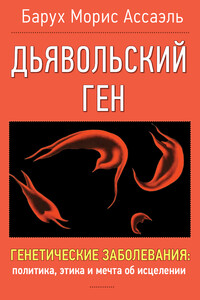
Оказалось, достаточно всего одного поколения медиков, чтобы полностью изменить взгляд на генетические заболевания. Когда-то они воспринимались как удар судьбы, а сейчас во многих случаях с ними можно справиться. Некоторые из них почти исчезли, как, например, талассемия, отступившая на Кипре благодаря определенным политическим мерам, или болезнь Тея–Сакса, все менее распространенная у евреев-ашкеназов. Случаи заболевания муковисцидозом также сократились. Генетические заболевания похожи на родовое проклятие, то появляющееся, то исчезающее от поколения к поколению.
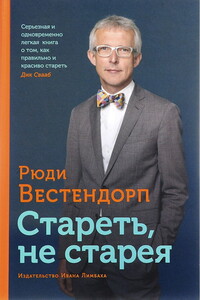
Книга Рюди Вестендорпа, профессора геронтологии Лейденского университета и директора Лейденской академии жизненной активности и старения, анализирует процесс старения и его причины в широком аспекте современных научных знаний. Чему мы можем научиться от людей, которые оставались здоровыми всю свою исключительно долгую жизнь? Помогут ли нам ограничения в пище или гормоны, витамины и минеральные вещества? Как сохранить свои жизненные силы, несмотря на лишения и болезни? Автор систематизирует факторы, влияющие на постоянно растущую продолжительность жизни людей нашего времени. В книге подробно обсуждаются социальные и политические последствия этого жизненного взрыва.
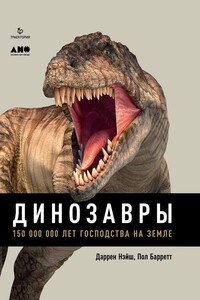
Если вы читали о динозаврах в детстве, смотрели «Мир юрского периода» и теперь думаете, что все о них знаете, – в этой книге вас ждет много сюрпризов. Начиная c описания мегалозавра в XIX в. и заканчивая открытиями 2017 г., ученые Даррен Нэйш и Пол Барретт рассказывают о том, что сегодня известно палеонтологам об этих животных, и о том, как компьютерное моделирование, томографы и другие новые технологии помогают ученым узнать еще больше. Перед вами развернется история длиной в 150 миллионов лет – от первых существ размером с кошку до тираннозавра и дальше к современным ястребам и колибри.
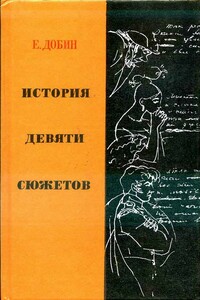
В книге в занимательной форме рассказывается об истории создания девяти известных литературных произведений: от жизненного факта, положенного в основу, до литературного воплощения.
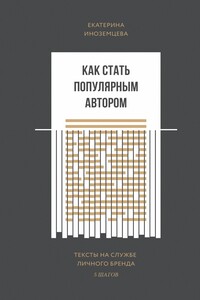
Месяцы сочинительства и переделок написанного, мыканья по издательствам, кропотливой работы по продвижению собственной книги — так начиналась карьера бизнес-автора Екатерины Иноземцевой. Спустя три года в школе писательства, основанной Екатериной, обучались 1287 учеников, родилось 2709 статей, 1756 из которых опубликовали крупные СМИ. И главное: каждый из выпускников получил знания о том, как писательство помогает развить личный бренд. В этой книге — опыт автора в создании полезного и интересного контента, взаимодействия со СМИ и поиска вашего кода популярности.
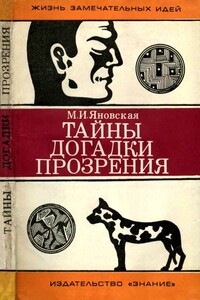
В книге рассказывается, как родилась и развивалась физиология высшей нервной деятельности, какие непостижимые прежде тайны были раскрыты познанием за сто с лишним лет существования этой науки. И о том, как в результате проникновения физиологии в духовную, психическую деятельность человека, на стыке физиологии и математики родилась новая наука — кибернетика.